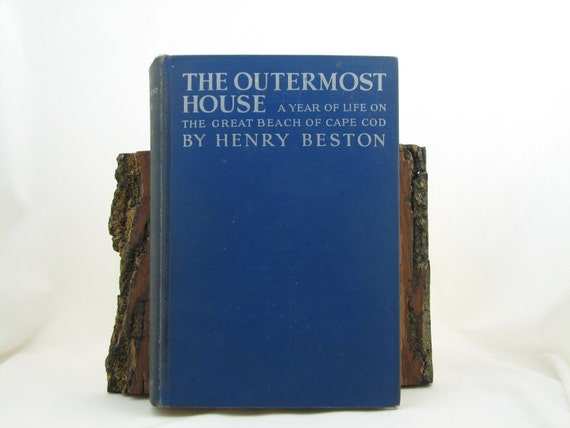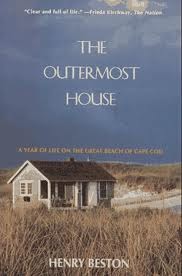

The first snow fell early in November, just before the dawn of a grey and bitter day.

Warmth left the sea, and winter came down with storms of rushing wind and icy, pelting rain. The splendour of colour in this world of sea and dune ebbed from it like a tide it shallowed first without seeming to lose ground, and presently vanished all at once, almost, so it seemed, in one grey week. His Cape Cod house was named a National Literary Landmark in 1964, and it was destroyed by a huge winter storm in 1978. The Outermost House, widely considered his masterpiece, was published in 1928.

He wrote many books in his lifetime, including a memoir of his years in the volunteer ambulance corps in the First World War, an account of life in the US Navy and a book of fairy tales. Henry Beston (1888–1968) was born in Quincy, Massachusetts and educated at Harvard. With its rhythmic, incantatory language and its heightened sensory power, The Outermost House is an American classic that changed writing about the wild: a hymn to ancient, eternal patterns of life and creation. Transforming the natural world into something mysterious, elemental and transcendent, Beston describes soaring clouds of migrating birds and butterflies the primal sounds of the booming sea luminous plankton washed ashore like stardust the long-buried, blackened skeleton of an ancient shipwreck rising from the dunes during a winter storm a single eagle in the endless blue. It was here that the writer-naturalist Henry Beston spent a year in a tiny, two-roomed wooden house built on a solitary dune, writing his rapturous account of the changing seasons amid a vast, bright world of sea, sand and sky.

A rediscovered classic of American nature writing: the poetic account of a solitary year observing the wild beauty of Cape CodĪ fragment of land in open ocean, the outermost beach of Cape Cod lies battered by winds and waves.


 0 kommentar(er)
0 kommentar(er)
